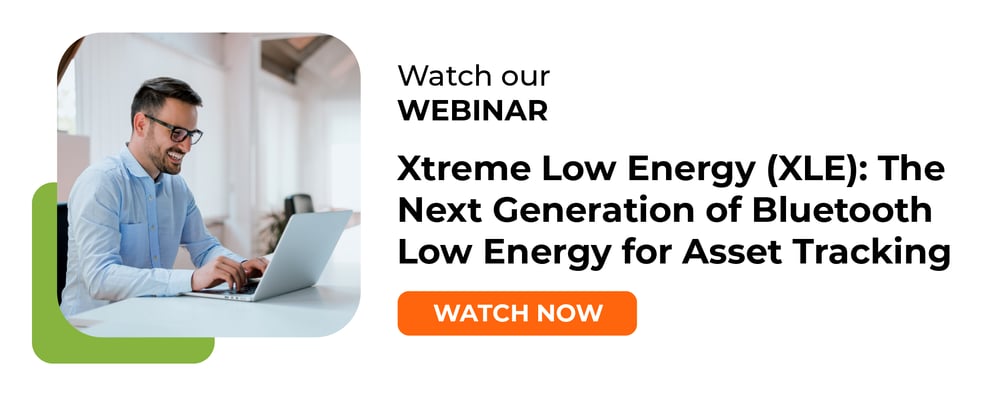Each year, the world gets more connected. Through the use of wireless technologies and connectivity solutions, consumers and workplaces alike find benefit in simplifying everyday processes. But what implications does this have on the environment, especially when considering factors such as batteries?
In a recent study by the European Commission, they reported that by 2025 up to 78 million batteries that power IoT devices will be discarded around the world daily. The majority of batteries powering IoT devices currently last significantly less time than the device’s lifetime. This can be as much as a 10 year device life while the battery only lasts up to 2 years. It’s important to reduce battery waste by investing in batteries with a longer lifespan.
Modern IoT Solution for Modern Problems
In the asset tracking industry, you may be familiar with active RFID solutions that require batteries to power the connected Real Time Location Solution (RTLS). Typical devices include, beacons, access points, and asset tags. Asset tags are often battery-powered with an average battery life of 1-2 years. This all depends on the type of connectivity solution that transmits data into the cloud. Such examples include UWB, Bluetooth, and Bluetooth Low Energy (LE).
Link Labs has pioneered the use of Bluetooth LE by creating what is called Xtreme Low Energy (XLE®). XLE® empowers users with up to 400% more battery life than comparable asset tracking solutions, ensuring companies never lose sight of their business assets.
How XLE® Works
XLE® is a wireless communication technology that enables IoT devices to connect and communicate with each other quickly and efficiently. As covered, XLE® uses less battery power than traditional Bluetooth LE, while still ensuring cost savings and a fast ROI.
As a phase-ranging technology, XLE® determines its location based on nearby location beacons. Within seconds, a tagged asset’s location is measured by the time it takes the tag to send a message to nearby beacons, to the time a tag receives a response. From the information received, a tag determines which beacon is closest, calculates the distance between it and the beacon, and sends an approximate location to the cloud-based User Interface (UI) of up to a meter.
Benefits of XLE® for Asset Tracking
The purpose of XLE® is to not only reduce power consumption and improve battery life but also provide asset location accuracy. Here is a breakdown of the key benefits of implementing the XLE® solution.
LASTING BATTERY LIFE
XLE® tags don’t need to transfer information to and from beacons as often as other technologies. By allowing the user to set parameters on how often the tag sends location updates, tag batteries last even longer. The low-power consumption of these tags allows for a battery life of up to 7 years.
UP TO METER LEVEL ACCURACY
XLE® uses phase-ranging technology to determine a tag’s location using xyz coordinates with up to meter-level accuracy. Tags and beacons communicate with one another providing a precise location by triangulating the location of a tag from nearby beacons.
SIMPLE INVENTORY SEARCH
The XLE® IoT system can locate items like equipment, vehicles, tools, and other assets. This not only makes it easier to find missing items and track work-in-process (WIP) products but also for reporting and analytics. Through an integrated UI platform, users can identify bottlenecks or inefficiencies.
LONG READ RANGE
XLE® works best in an open area environment and is ideal for companies looking for products throughout the day with near-exact locations in real time, without straining tag battery life. The location beacons can capture data from a distance of 10 to 30 meters and capture transmissions from high ceilings with beacons being placed approximately 10 to 20 meters from each other.
WIFI INDEPENDENT
XLE® technology transmits data to a Link Labs Gateway and into the cloud without using a facility's Wi-Fi or cellular connection. It can be deployed as a standalone Internet of Things (IoT) network known as Symphony Link, resulting in lower cost, greater ROI, and no security risks.
Join Link Labs for a Webinar on IoT XLE®
Link Labs is hosting a webinar on October 7 at 1 PM ET to discuss XLE® in-depth,
alongside the importance of battery consumption. Join Link Labs hosts Bob Proctor, CEO, and Mark Bloechl, Chief Engineer, alongside moderator Michael Jenkins, Vice President of Business Development. Register for your spot today.





